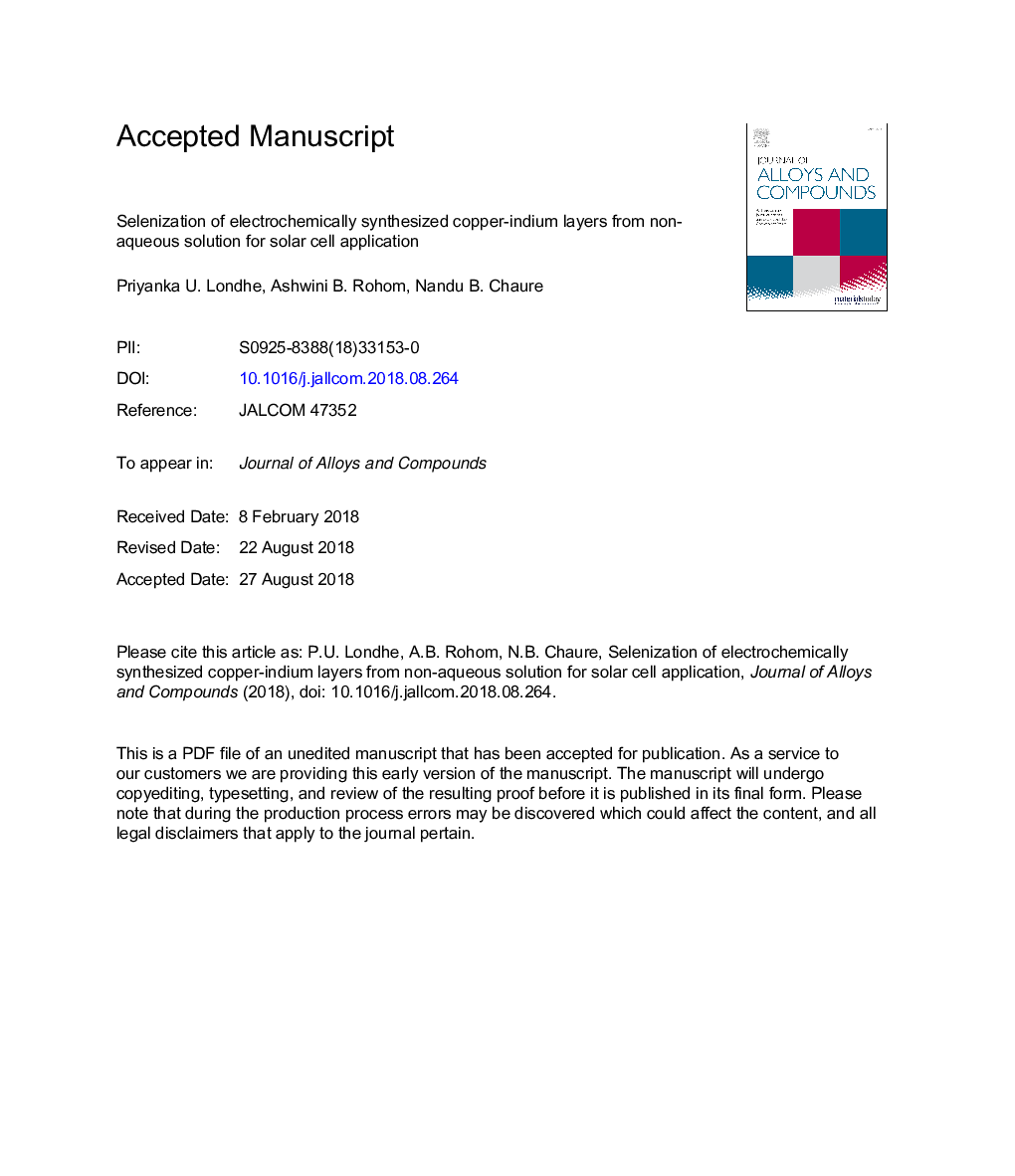| Article ID | Journal | Published Year | Pages | File Type |
|---|---|---|---|---|
| 10142101 | Journal of Alloys and Compounds | 2019 | 29 Pages |
Abstract
A simple two-step, electrodeposition of copper-indium (Cu-In) intermetallic alloy thin films followed by selenization process was employed for the synthesis and development of CuInSe2 (CIS) thin film solar cells (TFSC). The co-deposition of Cu and In in ethylene glycol at 130â¯Â°C was studied using the cyclic voltammetry (CV) to obtain a stable Cu-In phase. A wide window of deposition potentials from â0.7â¯V to â1.5â¯V versus Ag/AgCl reference electrode was optimized. Three different potentials, â0.7â¯V, â1.0â¯V and â1.3â¯V are chosen to deposit the Cu-In intermetallic alloy thin films, which were further selenized in controlled selenium ambient at 400â¯Â°C. The selenization effect is studied extensively on structural, morphological, optical and compositional properties of selenized Cu-In (CIS) thin films. Polycrystalline CIS layers with tetragonal crystal structure are obtained upon selenization of Cu-In thin films. Three prominent reflections of CIS, (112), (204/220) and (312/116) are exhibited in all selenized Cu-In layers. Additional secondary phases of CuxSe1-x are attributed for the layers grown at â0.7 and â1.0â¯V. Compact and void-free surface morphology with particle size â¼1-2â¯Î¼m was observed for all selenized samples. The selenized Cu-In layer sample deposited at â1.3â¯V measure â¼1.06â¯eV energy band gap with polycrystalline tetragonal chalcopyrite crystal structure of CIS. The photoelectrochemical measurement confirms the growth of p-type material. A selenized Cu-In layer deposited at â1.3â¯V with CdS window layer measured power conversion efficiency 5.44%.
Related Topics
Physical Sciences and Engineering
Materials Science
Metals and Alloys
Authors
Priyanka U. Londhe, Ashwini B. Rohom, Nandu B. Chaure,
